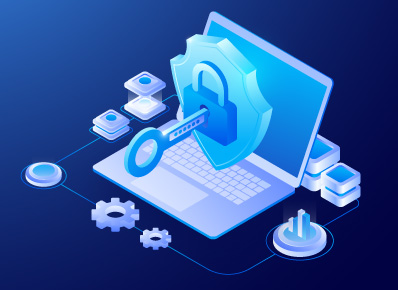What is Data Loss Prevention?
Data Loss Prevention (DLP) can be described as technologies that are used to do the content inspection and contextual analysis of data to identify regulatory violations such as HIPAA, PCI-DSS, or GDPR. The source of data can be any one of the following:
- Messaging applications (for example, email and Instant Messaging)
- Data at rest residing in on-premises file servers or cloud storage
- Data in transit over the network.
Once violations are identified this can help organizations in mitigating potential risks that could arise from malicious data spreading across various users by enforcing protective actions such as generating alerts, enforcing encryption, etc.
Why Do Organizations Need DLP?
- An increasing number of outside threats and attacks:
Organizations take data loss very seriously. Data hackers are becoming smarter every day and they keep finding new ways to access data and networks, thus companies are under immense pressure to keep looking for new threats.
- Inside threats:
There can be deliberate attempts by individuals within the organization to cause harm to a company because of a certain personal agenda. Internal attacks may prove to be more dangerous than outsider attacks as they already have access to the company’s sensitive data. If the employee is in a higher rank, then risk becomes much higher as they will have access to more sensitive data in comparison to other employees
- Information sharing by accident:
The individual may not have any intention to harm the company by revealing the company’s sensitive information. They may fall prey to Social engineering skills employed by data hackers. The attacker may want to fulfill their wrong intentions by targeting an individual.
- Poorly maintained BYOD:
In the recent past, many businesses have adopted bring your device (BYOD) policies with a view to operating more efficiently. However, not all such businesses have robust BYOD policies in place.
Individuals carry their tablets, personal phones, etc and thus BYOD makes it easier for employees to get access to data and share the company’s sensitive information DLP can make employees aware of data security-related concerns.
- Cloud-based storage and services:
In a BYOD scenario, employees may use their storage devices and online storage services, such as Google Drive, for sharing the company’s confidential information which are privy to the company. Such sensitive information should not step out of a company’s network. Hence, it is essential to ensure that proper security measures are in place so that business data is shared only within the authorized individuals within the organization and its network. Incidents of data loss can be a common affair if security protocols are not in place.
Different Vectors that DLP Solutions Cover
- Device Control:
Removable devices and peripheral ports can have granular access. Policies need to be established for users, computers, and groups to enforce device security.
- Content Protection:
Data leakage through all possible exit points, screen captures, USB devices, from clipboard to applications like Skype, Outlook, etc will be prevented.
- Data at rest scanning:
Scanning and identifying data at the endpoint level on Windows, macOS, Linux computers, etc thus helping in preventing data breaches. This also ensures compliance with regulations like HIPAA, PCI DSS, and others.
- Automatic Encryption:
Secure and manage USB storage devices through enforced encryption thus safeguarding data in transit. Easy to use, password-based, and highly efficient
Benefits of DLP
- Discover where sensitive data resides on your network and take appropriate actions.
- Helps organizations to put specific policies around the most sensitive data.
- Prevents data leaks without authorization.
- Provides full visibility on what’s happening with the data on their network.

